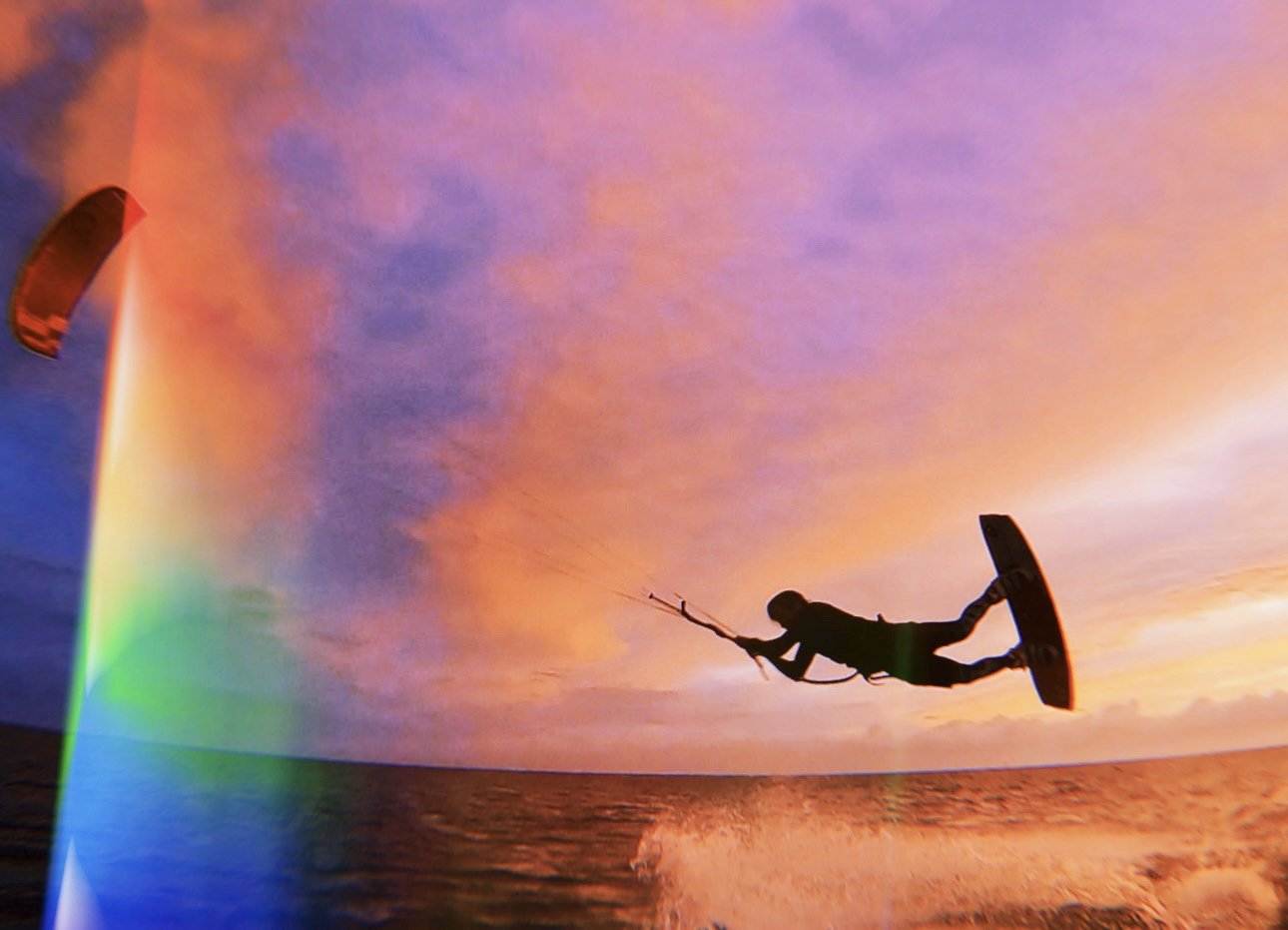
Kiteboarding Terms & Lingo
-
anatomy of a kite & gear
Bar Pressure: The amount of force you feel in your hands from the control bar.
Chicken Bone (Donkey Dick): A safety feature that prevents accidental unhooking from the chicken loop.
Chicken Loop: The loop on the control bar that attaches to the harness hook.
Depower: Reducing the kite’s power, usually by adjusting the bar or releasing the control lines.
Lines: The ropes that connect the kite to the control bar.
Quiver: A collection of kites of different sizes for varying wind conditions.
Sheet In/Out: Adjusting the kite's power by pulling (sheeting in) or releasing (sheeting out) the bar.
Spreader Bar: A metal bar that attaches the harness to the kite’s control system.
Twintip: The most common kiteboard, with symmetrical ends so you can ride both ways.
Wing: Another word for the kite.
-
weather related
Boosted: Catching a lot of air during a jump, typically due to strong wind.
Luffing: When the kite loses wind pressure and collapses.
Nuking: Really windy conditions; when the wind is strong and intense.
Power Zone: The area of the wind window where the kite generates the most power.
Swell: Large, rolling waves from distant weather systems, great for wave riding.
Whitecaps: White, foamy tops of waves indicating strong wind conditions.
Wind Shadow: An area where the wind is blocked by an obstacle, like a hill or building.
Wind Window: The 180-degree area downwind of the rider where the kite can fly.
Windward: Facing the wind.
Leeward: The direction opposite to the wind.
-
tricks and maneuvers
Back Roll: A trick where the rider rotates backwards in a full circle.
Front Roll: A trick where the rider rotates forward in a full circle.
Kiteloop: A trick where the kite makes a full loop in the air while the rider is airborne.
Pop: The action of using the kite and board to lift off the water for a jump.
Send it: Going all out—whether jumping high, riding hard, or doing a risky trick.
Unhooked: Riding or performing tricks without the harness hooked into the kite’s control bar.
Tea-bagged: When a rider repeatedly falls into and is lifted out of the water by the kite.
-
general slang
Boosted: Catching a lot of air during a jump.
Send it: To go all out, whether riding or performing tricks.
Tea-bagged: When a rider repeatedly falls into and gets lifted out of the water.
Ride Upwind: Traveling in the direction from which the wind is coming.
Downwind: Moving in the same direction as the wind.
-
riding techniques & safety
Launch: The process of getting the kite into the air.
Landing: Bringing the kite down from the air, often requiring assistance.
Relaunch: Getting the kite back in the air after it crashes into the water.
Tack: Changing direction by moving the kite to the opposite side of the wind window.
Back Stall: When the kite stops flying and falls backward, usually from too much power or improper bar control.
Zenith: The point directly above the rider in the wind window, at 12 o'clock.
-
kite types and styles
C-kite: A kite shaped like the letter “C,” offering more power but less depower and forgiveness.
Freeride: A style of riding focused on cruising and fun, rather than tricks or competition.
Freestyle: A style of riding focused on performing tricks, jumps, and maneuvers.
Foiling: Using a hydrofoil board, which lifts out of the water, reducing drag and allowing for smooth riding in light wind.
